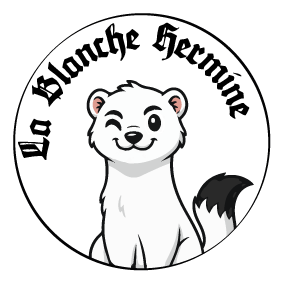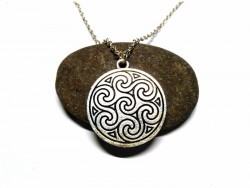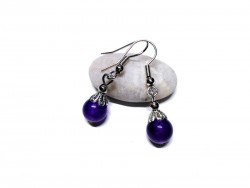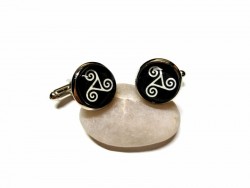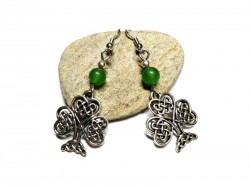Celtic art is not to be restricted to continental Brittany only (as commonly think French people), but also to the island of Britain, from Cornwall to Caledonia, and of course to Ireland. Similarly, if the historic home of the Celts can be located in central Europe somewhere north of the Alps, between Switzerland and Hungary, the Celts dispersed from Galicia in north-west Spain to Anatolia in central Turkey (the Galatians, hence the name of the famous Galatasaray club), in Gaul of course, but also in Eastern Europe Galicia.
This little toponymic reminder of the Celtic origin of many places is to be linked with numismatics: indeed, we find in this same area many coins from the pre-Roman era with extremely similar patterns. The Celts were therefore present, living and / or trading, in almost all of Europe, from the shores of the Atlantic to those of the Black Sea.
If recognizable by the recurring presence of knotworks, spirals and key patterns, Celtic art has over time been strongly influenced by contributions including Germanic in the north and Greco-Roman in the south. So what you think is Celtic is not always of Celtic origin ...
back to the Celtic jewels collection
A few examples of Cetlic jewels
Archaeological pieces (jewelry, helmets, scabbards, etc.) from the First & Second Iron Ages (Hallstatt & La Tène civilizations), therefore prior to the Roman occupation, show above all spirals. The spiral is the original marker of Celtic art.
During the Christianization of the British Isles (Saint Patrick: 5th century), the founding of monasteries implied the need for liturgical objects to celebrate services and books to train monks. This material was thus imported from important centers of Christendom, such as Rome, Constantinople or Alexandria.
These objects being decorated with key patterns and knotworks, they have been incorporated into the corpus of so-called Celtic art.
It should be noted that the first illuminated manuscripts come from the Christians of the East of whom the current Copts are the descendants. The influence of this oriental style is found in the manuscripts produced in the British Isles, in particular in the representation of the four Evangelists and the Tetramorph.
back to the Celtic jewels collection
A few examples of Cetlic jewels
With the arrival in present-day England around the 5th century of Germanic peoples (Saxons, Angles, Jutes, etc.), other specific patterns are also integrated: animals, as evidenced by the striking resemblance between the Visigothic jewels found in Spain and bird patterns similar to those struck on Nordic coins (Viking age).
The development of monasteries in the British Isles also allowed the creation of scriptoriums where Irish or Anglo-Saxon monks were present. This is why in the illuminated parchments the style commonly called Celtic is more exactly called Hiberno-Saxon insofar as the types of patterns presented above are present.
back to the Celtic jewels collection
A few examples of Cetlic jewels
After the barbarian migrations, Continental Europe was re-Christianized, mainly by Irish monks who founded new abbeys on their way, with their scriptorium. The most famous monk is Saint Colomban, who founded among others the abbey of Luxeuil in Franche Comté, and among his followers Saint Gall, who founded him the eponymous abbey, in the same eponymous canton of Switzerland.
This explains the spread of the Hiberno-Saxon style in the manuscripts, both in the spelling (the insular semi-uncial) and in the patternss, until the Carolingian cultural reform (and the creation of the Caroline).
back to the Celtic jewels collection
A few examples of Cetlic jewels
And in details ...
- The triquetra, the Trinity Knot
See also: On the use of symbols
